Spotlight on Sustainable Development Goal 5: Achieve gender equality and empower all women and girls
Date: 05 July 2017
Gender equality and women’s empowerment is integral to achieving the Sustainable Development Goals (SDGs). This thematic spotlight is part of a series showcasing where women and girls stand against select SDG targets and was produced in support of the High-level Political Forum on Sustainable Development at UN Headquarters in New York from 10–19 July, 2017. Download print version »
Related links:
- Editorial spotlight: High-level Political Forum on Sustainable Development
- Report of the UN Secretary-General, Progress towards the Sustainable Development Goals, E/2017/66
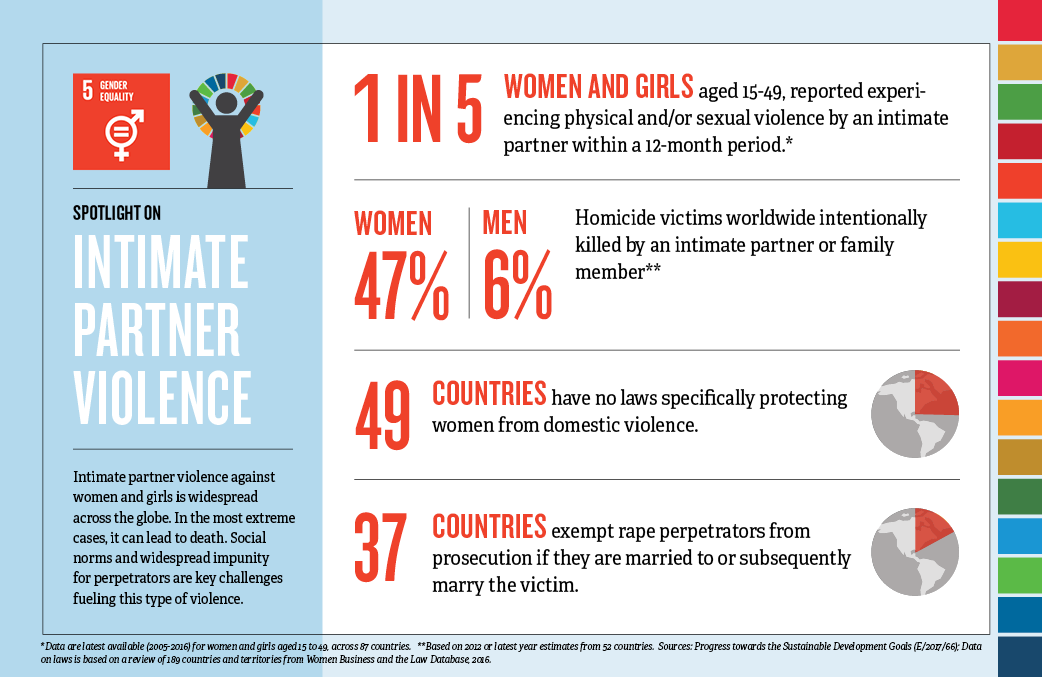
Target 5.2: Eliminate all forms of violence against all women and girls in the public and private spheres, including trafficking and sexual and other types of exploitation
Indicators:5.2.1 Proportion of ever-partnered women and girls aged 15 years and older subjected to physical, sexual or psychological violence by a current or former intimate partner in the previous 12 months, by form of violence and by age.
5.2.2 Proportion of women and girls aged 15 years and older subjected to sexual violence by persons other than an intimate partner in the previous 12 months, by age and place of occurrence.
Data gaps
Data on the prevalence of violence against women and girls is often lacking. This is especially true for women and girls with disabilities, ethnic minorities, migrant workers and older women. Even where the data exists, comparability across and within countries remains a considerable challenge for global monitoring.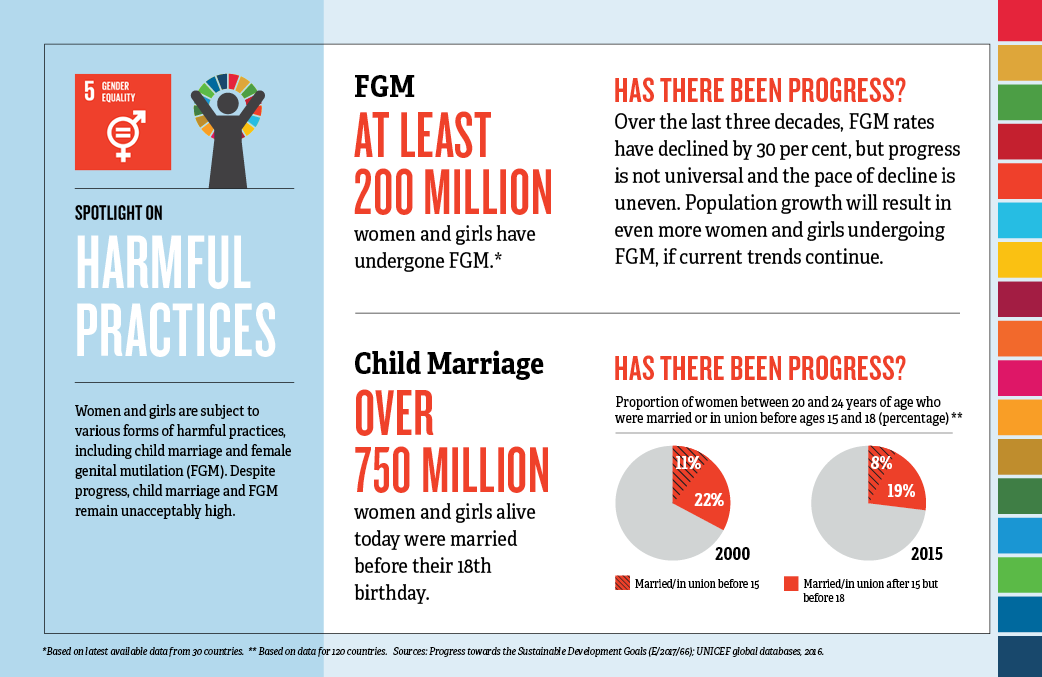
Target 5.3: Eliminate all harmful practices, such as child, early and forced marriage and female genital mutilation
Indicators:5.3.1 Percentage of women aged 20-24 who were married or in a union before age 15 and before age 18.
5.3.2 Percentage of girls and women aged 15-49 who have undergone female genital mutilation/cutting, by age group.
Data gaps
The sensitive nature of FGM poses challenges in the reliable collection and comparability of such data, as families are reluctant to provide these details. In addition, prevalence levels among different groups and/or regions within countries are not always available, leaving only national prevalence rates which obscure differences.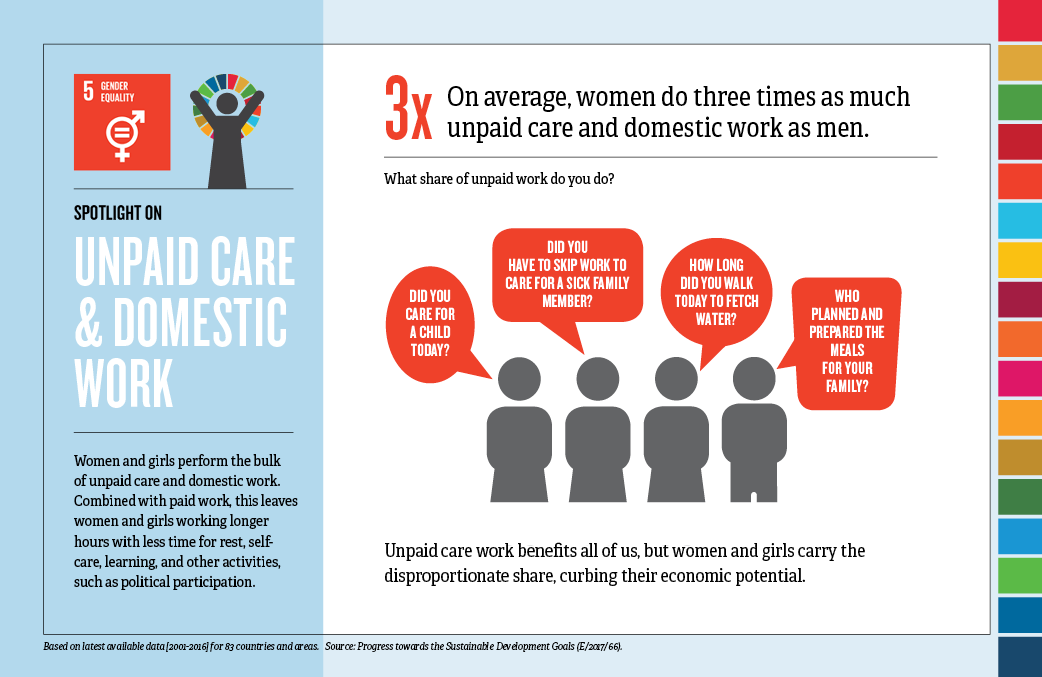
Target 5.2: Recognize and value unpaid care and domestic work through the provision of public services, infrastructure and social protection policies and the promotion of shared responsibility within the household and the family as nationally appropriate
Indicators:5.4.1 Percentage of time spent on unpaid domestic and care work, by sex, age group and location.
Data gaps
Time-use surveys remain unavailable or ad-hoc in many countries, and few are carried out with regularity to allow for trend analysis.Moreover, caring for children, elderly and the sick often overlaps with domestic work, making accurate person-to-person care statistics difficult to capture.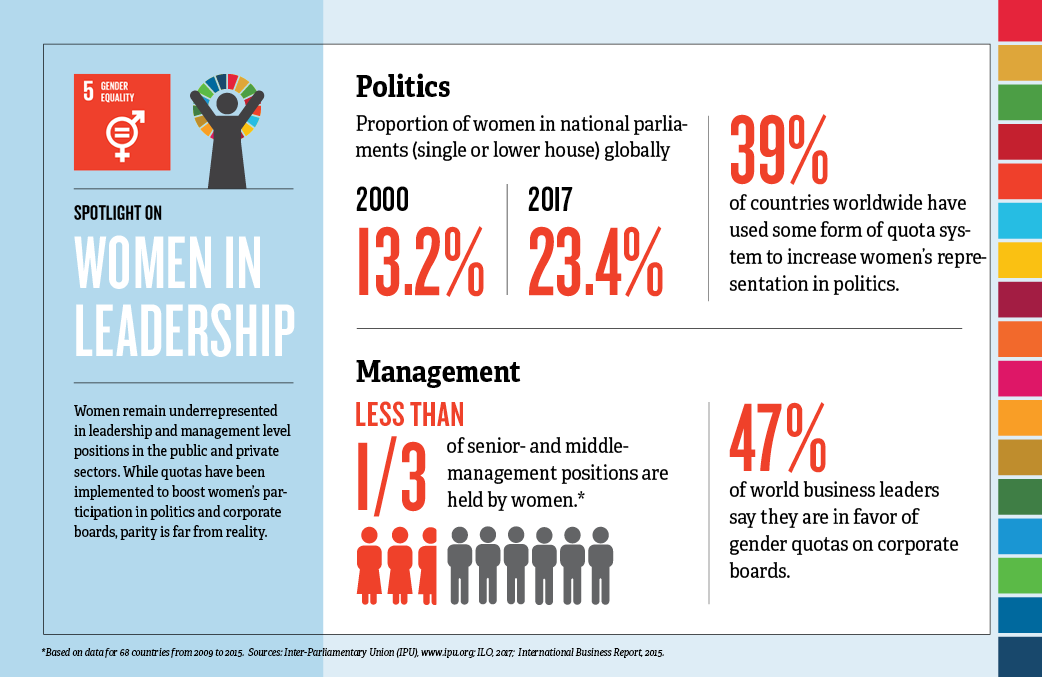
Target 5.5: Ensure women’s full and effective participation and equal opportunities for leadership at all levels of decision-making in political, economic and public life
Indicators:5.5.1 Proportion of seats held by women in national parliaments and local governments.
5.5.2 Proportion of women in managerial positions.
Data gaps
There is currently no mechanism for the global monitoring of women in local governments. This data is vital to obtain a holistic perspective on women’s political participation.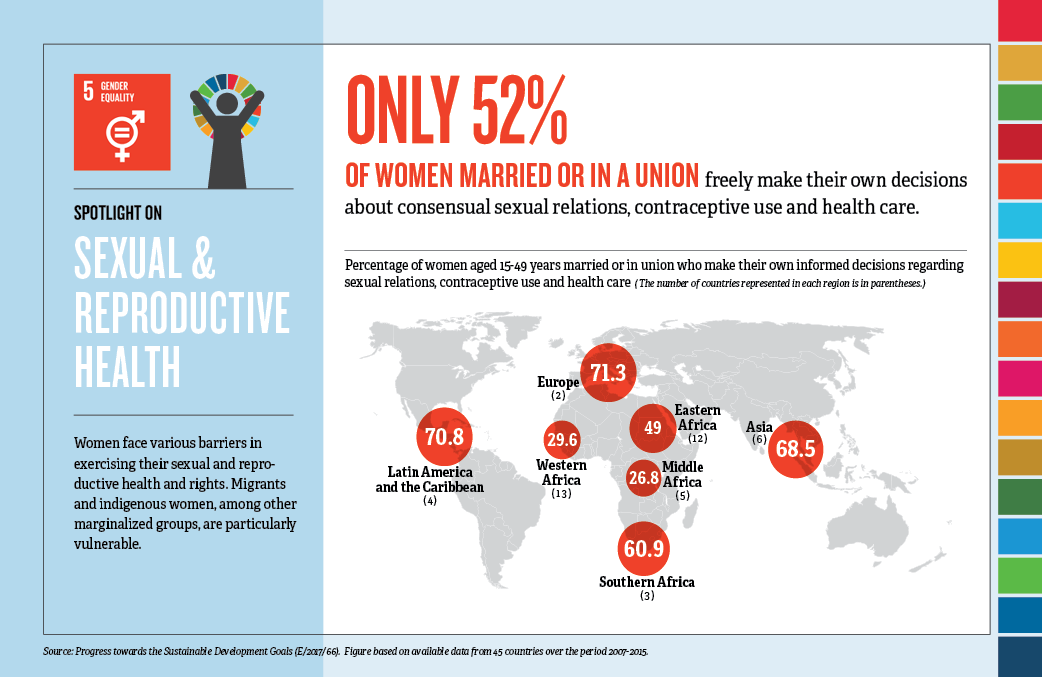
Target 5.6: Ensure universal access to sexual and reproductive health and reproductive rights as agreed in accordance with the Programme of Action of the International Conference on Population and Development and the Beijing Platform for Action and the outcome documents of their review conferences
Indicators:5.6.1 Proportion of women aged 15-49 who make their own informed decisions regarding sexual relations, contraceptive use and reproductive health care.
5.6.2 Number of countries with laws and regulations that guarantee full and equal access to women and men aged 15 years and older to sexual and reproductive health care, information and education.
Data gaps
Currently there is no comprehensive overview of data on laws and regulations that guarantee women and men full and equal access to sexual and reproductive health care, information and education. Moreover, data coverage for indicator 5.6.1 is also limited, with estimates for only 45 countries, and mostly in sub-Saharan Africa.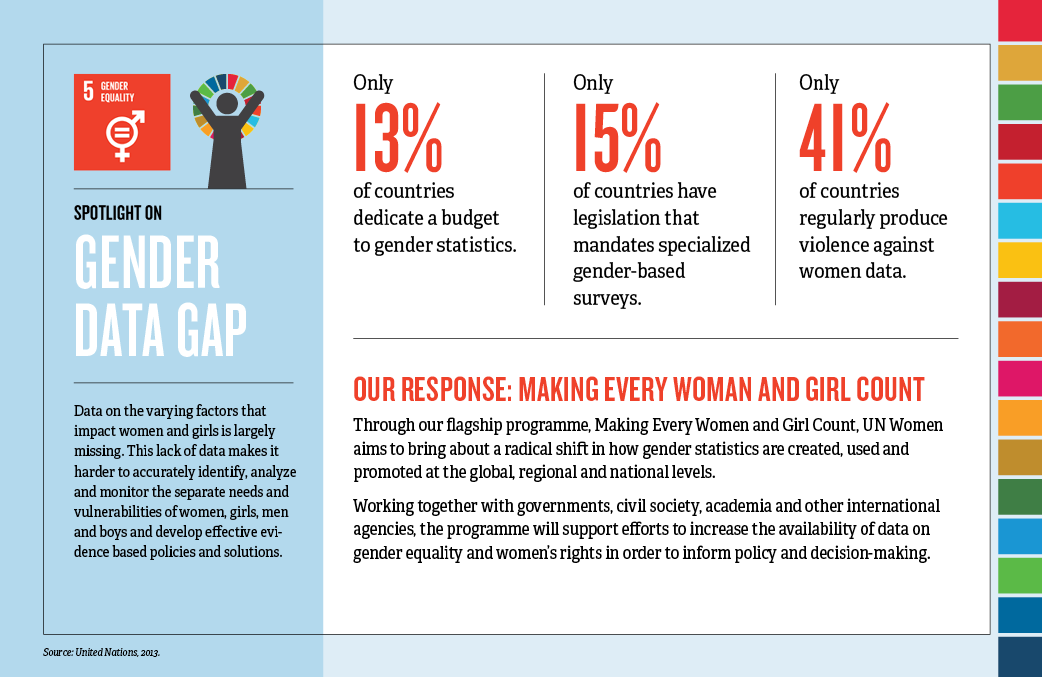
Making every woman and girl count
Making Every Women and Girl Count is a UN Women flagship programme that aims to bring about a radical shift in how gender statistics are used, created and promoted at the global, regional and national levels.The five-year programme will provide technical and financial support to countries to improve the production and use of gender statistics in order to monitor the implementation of gender equality commitments in the 2030 agenda.
The programme is generously funded by the governments of Australia, Ireland and the United States of America and the Bill and Melinda Gates Foundation.
How it works
The programme focuses on three key areas:- Enabling environment: Promoting a supportive policy environment to address institutional and financial constraints and to strengthen policies and practices governing the production of gender statistics.
- Data production: Supporting efforts to improve the regular production of gender statistics, including building the technical capacity of the national statistical sys¬tem and providing financial support to collect data to monitor the SDGs and other national commitments.
- Data accessibility: Promoting greater access and analysis of data by users, includ¬ing open access, providing dissemination tools, supporting user-producer dialogues and strengthening the capacity of all relevant actors to use gender statistics in policy and advocacy.